In recent decades, office-based surgery has become more and more common as the medical landscape changes to accommodate a cultural shift toward preventive care and an increase in elective medical procedures. While medical specialties like plastic surgery and gastroenterology have only recently begun providing office-based surgery, dentistry—specifically oral and maxillofacial surgery (OMS)—has been providing the service for over 150 years. In that time OMS has developed industry-leading safety protocols for office-based anesthesia administration and an anesthesia-related safety record that is second to none. But how did it all start?
The Discovery of Anesthesia and Its Effect on Dentistry

An illustration of Horace Wells’s first nitrous oxide experiment, wherein he allowed his partner, John Riggs, to extract one of his own teeth after Gardner Quincy Colton administered nitrous oxide. (Source)
Pain is often the reason patients seek dental care, but the fear of pain is also one of the reasons why many patients avoid dental care. It was this close relationship between dentistry and pain that motivated Horace Wells (1815–1848), an American dentist, in his discovery of anesthesia. As the famous story goes, Dr Wells attended a nitrous oxide demonstration in Hartford, Connecticut, where he witnessed a participant bang his legs into a bench accidentally but without experiencing any pain. The next day, Dr Wells tested the effects on himself—he asked a colleague to remove one of his teeth while he was under the influence of nitrous oxide. A few weeks later, he demonstrated his anesthetic method at Massachusetts General Hospital by administering nitrous oxide to a medical student prior to extracting the student’s third molar. His use of nitrous oxide earned him the credit for discovering anesthesia.
Dr Wells’s discovery sparked an era of innovation as other dentists rushed to offer anesthesia for their patients and discover new methods for anesthesia administration, including local anesthesia. Before the 1930s, when dentists began using local anesthesia on a larger scale, patients in need of extractions or similar procedures migrated to practices that had access to general anesthesia. A distinctive divide developed between dentists who provided general anesthesia for their patients and those who did not; the cohort of dentists who did provide general anesthesia, mainly exodontists, eventually developed into the OMS specialty. This divide culminated with the formation of the American Society of Exodontists in 1918; today, this organization is known as the American Association of Oral and Maxillofacial Surgeons (AAOMS).
Anesthesiology Spreads to Medicine
While dentistry grappled with its own identity crisis with regard to anesthesiology, the broader field of medicine also began questioning the role anesthesiology should play in the practice of medicine. Daniel L. Orr II, an oral and maxillofacial surgeon based in Las Vegas, Nevada, explains: “After safe, reproducible anesthesia was discovered by dentistry in 1844, dentists were the primary operator/administrators and providers of the service for others, including physicians in hospitals, for most of the 19th century. It wasn’t until the 20th century that medicine also began to embrace anesthesia, beginning with the precursor of the American Society of Anesthesiologists (ASA) in 1905.”
When the ASA started, it was a small organization of just nine physicians based in Long Island, New York. It would still take a few more decades before physicians across the country caught on. In an article published in 2013 by the Oral and Maxillofacial Surgery Clinics of North America, Dr Orr identifies the catalyst that elevated anesthesiology into the broader spectrum of medicine:
[The 1940s were] significant in that anesthesiology changed from what was often deemed an insignificant afterthought. . . to an area that began to be embraced as essential by dentistry, medicine, veterinary medicine, and nursing.
The remarkable growth of anesthesiology in the 1940s was brought on by 2 major factors. First, it was the decade that recognized the 100th anniversary of the discovery of anesthesia. . .
The second factor influencing the remarkable recognition of anesthesia was World War II itself. In fact, wars did much to promote the art during the previous century. [William Taggart Green] Morton provided 3,000 anesthetics during the Civil War.7 The American Association of Nurse Anesthetists traces its founding to the same conflict. However, World War II was the first time that the military formally planned for the provision of anesthesia during surgery. . .
After World War II, anesthesiology took off as a designated field of medicine. But, despite dentistry’s contributions to both the discovery and the development of anesthesiology, contention developed between the two fields over dentistry’s use of anesthesia.

Surgeons and an anesthesiologist performing surgery during World War II in a makeshift surgical bunker. (Source)
Dentistry Versus Medicine, Office-Based Anesthesia Versus Hospital-Based Anesthesia

The original Baltimore College of Dental Surgery, the first dental college in the world and the birthplace of the DDS degree. The dental college was incorporated into the University of Maryland in 1923. (Source)
For a detailed history of how dentistry developed separate from medicine, take a look at The Long Climb: From Barber-Surgeons to Doctors of Dental Surgery by Philias Roy Garant (Quintessence, 2013). For a quick and simplified explanation, we can trace the root to 1837 when two dentists named Horace Hayden and Chaplin Harris proposed that the medical faculty of the University of Maryland add dentistry to their medical program; the faculty responded that “the subject of dentistry was of little consequence and thus justified their unfavorable action.” So the two dentists opened their own dental school, the Baltimore College of Dental Surgery, and formal dental education has remained separate from medical school ever since. This separation would later lead to the parallel development of two fields of anesthesia: office-based (dentistry) and hospital-based (medicine).
“Perhaps the most important development that can be attributed to dentistry,” Dr Orr explains, “is office-based, out-of-hospital, outpatient surgery and anesthesia. Because dentists worked from private offices, they couldn’t admit patients the night before surgery, operate the next day, and release them on the third day. Dental procedures done using general anesthesia were completed in a matter of a few hours, portal to portal—a concept unheard of at the time in medicine.”
Meanwhile, medical surgeons did have access to those resources. They had admitting privileges at hospitals with anesthesiologists and nurses. Moreover, their procedures were often covered by their patients’ health insurance, so the cost of those resources was not antithetical to the existence of their practice.
“Anesthesiology has been controversial in dentistry and medicine since it was first discovered,” Dr Orr laments. “But there are situations unique to dentistry that are interesting. Until 1950 dentists were able to be unrestricted members of the ASA.” (Now, membership for dentists, veterinarians, and other non-physician administrators of anesthesia is restricted to educational membership.) “The ASA even had dental officers and at least one dental president, Charles Teeter. The International Anesthesia Research Society (IARS) still accepts dentists as full members. The American Dental Society of Anesthesiology (ADSA) was founded in order to provide a platform for dentist anesthesiologists, including OMS, after the ASA option was lost.”
In his 2013 article, Dr Orr recounts a moment from his residency at the University of Utah Medical Center Department of Anesthesiology that exemplifies the tension between medicine and dentistry on the subject of anesthesiology:
In early 1976 the opening of Utah’s first outpatient surgical center was announced to university anesthesia residents at rounds. It was explained that this was a facility where patients could be admitted in the morning, receive an anesthetic for a surgical procedure, and return home on the same day! The anesthesia faculty discussed in an animated fashion whether this new model was safe and questioned if it would even survive. One of the dental residents then commented that dentistry had been doing the same thing for 100 years (actually since December 1844), out of private dental offices in fact, causing consternation for the physician anesthesiologists in the room.
Just as education was the first step toward the professionalization of dentistry, education also forms the foundation of anesthesiology in OMS, and it is only through organized effort that the OMS community has been able to protect this foothold. Later in the article, Dr Orr describes this event from 1990:
Historically, there were more than 150 anesthesia residencies that had allowed dentist residents through the decades. In June 1990 the ASA was advised about the numbers of dentist anesthesiologists that had been trained in medical residencies through the years. The ASA then contacted the Accreditation Council for Graduate Medical Education (ACGME) and opined that residencies that deigned to train dentists should not be accredited. The ACGME then contacted all accredited anesthesiology residencies and iterated that if dentists continued to be rostered, programs might lose accreditation. Almost overnight, all but a handful of medical residencies determined to no longer admit dentists for training. The AAOMS, however, was able to negotiate continued rotations on anesthesiology services for OMS residents.
Even while hospitals and medical specialties were implementing treatment protocols designed by OMS (outpatient anesthesia and surgery, office-based anesthesia and surgery), the medical community still seemed to reject OMS’s place within their community. We can only imagine how different history would be had the University of Maryland accepted Drs Hayden and Harris’s proposal: How quickly would anesthesia have been implemented by the entire medical community, and how early would outpatient surgery have become an option for patients outside of the dental clinic?
The Safety of Anesthesia in OMS
The legacy of and reasoning behind continuing anesthesiology in OMS isn’t just based on the discoveries and innovations of prior centuries, despite the noteworthiness of the office-based surgery model. OMS has also developed a team approach to anesthesia that has contributed to an anesthesia-related safety record that even beats that of hospitals for comparable procedures. There are many possible reasons for this: the lengthy history of anesthesiology in OMS, the team-based approach of OMS versus the individual approach of hospital-based surgery, and the overall emphasis by the industry on safety. Because OMS faced increased scrutiny and discrimination by the medical community from the beginning, the industry has developed safety protocols to protect their patients and, consequently, the industry’s legacy.
No one expects to die at the dentist’s office, making it all the more shocking when an adverse outcome is made public. However, statistics show that anesthesia in an OMS clinic is quite safe. Studies by the Southern California Society of OMS in the 1960s showed that while hospital mortality for tonsillectomy and adenoidectomy was 1 in 12,000, removal of third molars under general anesthesia in dental offices was less than 1 in 400,000. According to the Oral and Maxillofacial Surgery National Insurance Company (OMSNIC), between 2000 and 2014 oral surgeons covered by the OMSNIC administered office-based anesthesia 42,792,419 times, which is about 666 administrations per oral surgeon per year. Out of the total number of administrations, 415 anesthesia-related claims for complications were reported to the OMSNIC and included 121 deaths. This equals 1 death for every 353,657 administrations.
How to Protect a Legacy
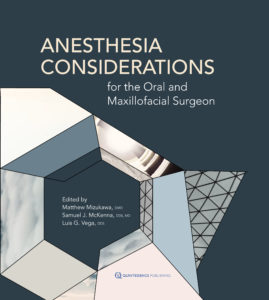 As patients live longer and with more comorbid diseases, the field of anesthesiology as a whole, whether hospital-based or office-based, must adapt their models to include thorough assessments of each individual patient. This challenge is what motivated Matthew Mizukawa to develop his new book for clinicians, Anesthesia Considerations for the Oral and Maxillofacial Surgeon (Quintessence, 2017).
As patients live longer and with more comorbid diseases, the field of anesthesiology as a whole, whether hospital-based or office-based, must adapt their models to include thorough assessments of each individual patient. This challenge is what motivated Matthew Mizukawa to develop his new book for clinicians, Anesthesia Considerations for the Oral and Maxillofacial Surgeon (Quintessence, 2017).
“In residency, you are constantly encountering complex patients who are difficult from an anesthesia standpoint,” Dr Mizukawa explains. “You become accustomed to managing those patients, all while under the supervision of a faculty surgeon—someone who will always be there to back you up or get you out of a bind. In private practice, you don’t have that safety net. The buck stops with you. On top of that, over time you start to forget some of the principles of managing comorbid diseases when you see them less frequently. You begin to lose the information you need to answer the questions of: Is it safe to perform office-based anesthesia on this patient? Why, or why not? What additional information do I need to make this decision?
“The complexity of each anesthetic case,” he continues, “is dictated by the patient’s age, medical history and current medications, past anesthetic experiences, airway anatomy, and degree of procedural anxiety. Each patient must be evaluated thoroughly, and the provider personalizes the anesthetic plan based on those careful assessments. This book guides the anesthesia provider along their decision tree and ultimately gives insight to the question of whether office-based anesthesia can be safely provided for each patient.”
The contents of the book are divided into three sections: Section 1 covers the principles of anesthesia, Section 2 provides a review of each major organ system and related diseases/disorders, and Section 3 addresses anesthetic considerations for special patient populations. Dr Mizukawa gives an example of a patient he treated and explains how the book can assist clinicians in similar cases:
A 78-year-old man presented for consultation prior to having his remaining teeth extracted. His medical portfolio included coronary artery disease, atrial fibrillation, asthma, type 2 diabetes, hypertension, hyperlipidemia, chronic kidney disease, and morbid obesity with associated obstructive sleep apnea. He was taking myriad medications to manage these conditions. In addition, poor experiences receiving dental treatment in the past had made him extremely anxious around the dental and surgery setting in general. “This scenario may have been an outlier a few decades ago,” Dr Mizukawa says. “However, with the rate of current advances in medicine, patients like these come in every day.”
So, is it safe to perform an office-based anesthetic for this patient? Dr Mizukawa explains how the book can be used to answer that question: “To tackle the coronary artery disease first, the clinician can review the section on ischemic heart disease in the cardiovascular system chapter. Here, the book provides refresher information on the pathophysiology of coronary artery disease to help the clinician determine the severity of the patient’s disease, a general review of how coronary artery disease is medically managed to help evaluate how well the patient’s disease is currently controlled, and information on how coronary artery disease is worked up to help the clinician communicate with the patient’s cardiologist. The chapter then discusses anesthetic considerations for coronary artery disease. The renal chapter provides the same information regarding the patient’s chronic kidney disease, with an additional section on recommended changes in anesthetic drug dosage based on kidney function. This process can be repeated for each of the patient’s comorbidities with the goal of determining how to most effectively and safely manage this patient’s needs, whether that be through office-based anesthesia or moving the procedure to a hospital environment.
“Once all of the disease processes have been reviewed and assessed for severity and control, additional resources are available to help guide the provider. The chapter on IV anesthetic agents helps the clinician determine which agents to use and which to avoid, as well as whether to modify dosing in light of comorbid disease. The chapter on obstructive sleep apnea (OSA) advises the clinician on how OSA will affect the monitors, particularly the end-tidal carbon dioxide monitor, while the chapter on airway emergencies covers management of the airway in the presence of OSA. The medical emergencies chapter covers myocardial ischemia and infarction, which must be considered in light of the history of coronary artery disease. In the special patient population section of the book, the clinician finds special anesthetic considerations that must be appreciated regarding geriatric patients and patients with morbid obesity and obstructive sleep apnea.

The STOP-BANG questionnaire as it appears in the book.

Sample pages from the chapter on geriatric patients and anesthesia considerations for their safe treatment.
“And finally: Patients with multiple comorbidities will likely have a very long medication list,” Dr Mizukawa concludes. “All medications modulate the normal physiological processes of the human body to some degree. For some medications, these changes are insignificant, while some medications have serious effects on anesthesia. Appendix A of the book provides a comprehensive list of commonly prescribed medications, their mechanism of action, indications for use, and their effects on anesthesia. While not a complete index of every drug that exists, it is a list of drugs commonly encountered while evaluating patients.”

A sample from Appendix A in the book.
As for the patient above: Dr Mizukawa was able to safely anesthetize him in office. After consulting with the patient’s primary care provider and specialists and reviewing the information he would later include in the book, Dr Mizukawa developed an anesthetic plan personalized to address the patient’s individual needs. The book takes initially overwhelming cases like this one and provides a simplified, structured guide for the clinician in creating an anesthetic plan.
The Future of Anesthesiology in OMS
“My hopes for the future of anesthesiology in OMS are threefold,” Dr Mizukawa explains. “I hope that we are able to not just maintain, but strengthen the margin of safety of office-based anesthesia by reducing the number of complications and deaths—despite the rising number of total anesthetics provided each year, and despite the increasing complexity of patients encountered. I hope that we continue to be leaders and innovators in anesthesia progress and develop evolving techniques and devices that make office-based anesthesia more safe and efficient. There are some who feel that the OMS model, where the surgeon also functions as the anesthesia provider, is not safe. My last hope is that OMS, by strengthening our margin of safety and innovating office-based anesthesia, will prove that our model is both safe and efficient.
“The biggest obstacle we face regarding our continued use of anesthesia is distinguishing OMS from other dental anesthesia providers,” he says. “The anesthesia training that we receive is sound. I feel that, though they are not an ADA-recognized specialty, dental anesthesiologists also receive sound training. But there are other specialties and general dentists who receive minimal training—sometimes only a 1- or 2-week course—who are then able to provide anesthesia to their patients. There is a growing concern in the public that dentists who perform anesthesia are dangerous. Even though I know there is no comparison between the anesthesia background and training in OMS and these other groups, the public at large cannot distinguish us from them. Our ability to distinguish ourselves from these groups is critical in preserving our ability to practice the surgeon/anesthetist model. This underscores my motivation behind this book.”
The unique organizational structure of Dr Mizukawa’s book makes it an invaluable and practical supplement to the clinician’s personal knowledge and expertise. It aims to quickly and effectively provide pertinent information to the anesthesia provider and assist in making decisions regarding anesthesia care and, in doing so, help preserve and strengthen the exceptional margin of safety of office-based anesthesia in OMS. The hope is that any group providing office-based anesthesia—whether oral and maxillofacial surgeons, periodontists, dental anesthesiologists, certified nurse anesthesiologists, gastroenterologists, or myriad others—can use this book to safely and efficiently provide anesthesia to their patients. The goal of anesthesia has always been to safely manage patient pain, and Dr Mizukawa’s book furthers this goal in a nonpartisan way for anyone willing to use it.
 Anesthesia Considerations for the Oral and Maxillofacial Surgeon
Anesthesia Considerations for the Oral and Maxillofacial Surgeon
Edited by Matthew Mizukawa, Samuel J. McKenna, and Luis G. Vega
Although office-based anesthesia administration has been essential in the evolution of outpatient surgery, it is becoming more complex as people live longer and with more comorbid diseases. The purpose of this book is to strengthen the margin of safety of office-based anesthesia administration by helping practitioners determine whether the patients they treat are good candidates for office-based anesthesia. This book is organized into three sections. The first section provides a review of the principles of anesthesia, including the pharmacology of anesthetic agents, local anesthesia, patient monitoring, preoperative evaluation, the airway, and management of emergencies and complications. The major organ systems of the body are reviewed in section two, and the most common comorbid conditions that affect these systems are described in terms of their pathophysiology, diagnosis, management, and anesthesia-related considerations. Section three reviews patient groups that warrant special consideration in the administration of office-based anesthesia, such as geriatric, pediatric, pregnant, and obese patients. Spiral-bound and featuring tabs for quick and easy reference, this important book belongs on the shelf of every clinician who provides anesthesia in the office setting.
482 pp; 101 illus; ©2017; ISBN 978-0-86715-713-0 (B7130); US $168
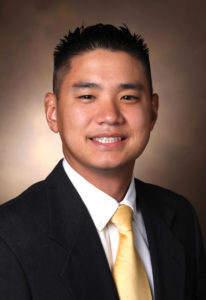 Matthew Mizukawa, DMD, is Assistant Clinical Professor in the Department of Oral and Maxillofacial Surgery at the Vanderbilt University Medical Center in Nashville, Tennessee. He obtained his dental degree from the University of Nevada at Las Vegas and completed his oral and maxillofacial surgery residency at the Vanderbilt University Medical Center, where he was awarded Best Consultant from the Department of Emergency Medicine. Dr Mizukawa is board certified by the American Board of Oral and Maxillofacial Surgeons and is a member of the American Association of the Oral and Maxillofacial Surgeons, the American Dental Association, the Utah Dental Association, and the Southern Utah Dental Association. He is co-editor of the book Anesthesia Considerations for the Oral and Maxillofacial Surgeon (Quintessence, 2017) and maintains a private practice limited to oral and maxillofacial surgery in St George, Utah.
Matthew Mizukawa, DMD, is Assistant Clinical Professor in the Department of Oral and Maxillofacial Surgery at the Vanderbilt University Medical Center in Nashville, Tennessee. He obtained his dental degree from the University of Nevada at Las Vegas and completed his oral and maxillofacial surgery residency at the Vanderbilt University Medical Center, where he was awarded Best Consultant from the Department of Emergency Medicine. Dr Mizukawa is board certified by the American Board of Oral and Maxillofacial Surgeons and is a member of the American Association of the Oral and Maxillofacial Surgeons, the American Dental Association, the Utah Dental Association, and the Southern Utah Dental Association. He is co-editor of the book Anesthesia Considerations for the Oral and Maxillofacial Surgeon (Quintessence, 2017) and maintains a private practice limited to oral and maxillofacial surgery in St George, Utah.
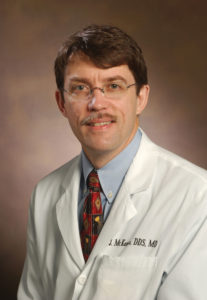 Samuel J. McKenna, DDS, MD, currently serves as Professor and Chair
of the Department of Oral and Maxillofacial Surgery residency at the Vanderbilt University Medical Center in Nashville, Tennessee. He received his dental degree from the University of California, Los Angeles School of Dentistry and completed his medical degree at the Vanderbilt University Medical Center, where he served as director of the oral surgery residency program. His research includes temporomandibular joint surgery, oral manifestation of systemic disease, and virtual surgical planning in the management of skeletal facial deformities. He is co-editor of the book Anesthesia Considerations for the Oral and Maxillofacial Surgeon (Quintessence, 2017). Dr McKenna lectures within both the dental and medical communities and is a member of the American Medical Association, the American Dental Association, the American Association of Oral and Maxillofacial Surgeons, and the Cumberland Pediatric Foundation.
Samuel J. McKenna, DDS, MD, currently serves as Professor and Chair
of the Department of Oral and Maxillofacial Surgery residency at the Vanderbilt University Medical Center in Nashville, Tennessee. He received his dental degree from the University of California, Los Angeles School of Dentistry and completed his medical degree at the Vanderbilt University Medical Center, where he served as director of the oral surgery residency program. His research includes temporomandibular joint surgery, oral manifestation of systemic disease, and virtual surgical planning in the management of skeletal facial deformities. He is co-editor of the book Anesthesia Considerations for the Oral and Maxillofacial Surgeon (Quintessence, 2017). Dr McKenna lectures within both the dental and medical communities and is a member of the American Medical Association, the American Dental Association, the American Association of Oral and Maxillofacial Surgeons, and the Cumberland Pediatric Foundation.
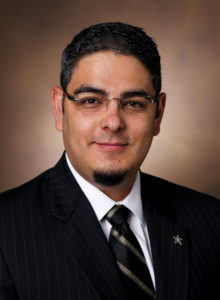 Luis G. Vega, DDS,
is Associate Professor and Residency Program Director in the Department of Oral and Maxillofacial Surgery at the Vanderbilt University Medical Center in Nashville, Tennessee. He received his dental degree from the University of Costa Rica and his certificate in oral and maxillofacial surgery from the University of Alabama at Birmingham. Dr Vega’s clinical practice covers the full scope of oral and maxillofacial surgery. He is co-editor of the book Anesthesia Considerations for the Oral and Maxillofacial Surgeon (Quintessence, 2017) and lectures locally, nationally, and internationally on the topics of temporomandibular joint reconstruction, orthognathic surgery, obstructive sleep apnea surgery, complex maxillofacial reconstruction utilizing zygomatic implants, and endoscopy in oral and maxillofacial surgery.
Luis G. Vega, DDS,
is Associate Professor and Residency Program Director in the Department of Oral and Maxillofacial Surgery at the Vanderbilt University Medical Center in Nashville, Tennessee. He received his dental degree from the University of Costa Rica and his certificate in oral and maxillofacial surgery from the University of Alabama at Birmingham. Dr Vega’s clinical practice covers the full scope of oral and maxillofacial surgery. He is co-editor of the book Anesthesia Considerations for the Oral and Maxillofacial Surgeon (Quintessence, 2017) and lectures locally, nationally, and internationally on the topics of temporomandibular joint reconstruction, orthognathic surgery, obstructive sleep apnea surgery, complex maxillofacial reconstruction utilizing zygomatic implants, and endoscopy in oral and maxillofacial surgery.
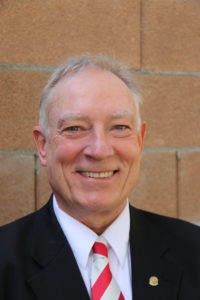 Daniel L. Orr II, DDS, MS (anesth), PhD, JD, MD, is Professor and Director of Oral and Maxillofacial Surgery at the University of Nevada, Las Vegas School of Dental Medicine. He received his dental degree from the University of South California School of Dentistry and completing both a residency and master of science in anesthesiology at the University of Utah School of Medicine. He is a member of the American Dental Association, the American Association of Oral and Maxillofacial Surgeons, and the American Dental Society of Anesthesiology, among others. In 2011, Dr Orr received the Daniel M. Laskin Award for Outstanding Predoctoral Educator from the American Association of Oral and Maxillofacial Surgeons. He is board certified in oral and maxillofacial surgery, anesthesiology, and legal medicine and contributed a book chapter to Anesthesia Considerations for the Oral and Maxillofacial Surgeon (Quintessence, 2017).
Daniel L. Orr II, DDS, MS (anesth), PhD, JD, MD, is Professor and Director of Oral and Maxillofacial Surgery at the University of Nevada, Las Vegas School of Dental Medicine. He received his dental degree from the University of South California School of Dentistry and completing both a residency and master of science in anesthesiology at the University of Utah School of Medicine. He is a member of the American Dental Association, the American Association of Oral and Maxillofacial Surgeons, and the American Dental Society of Anesthesiology, among others. In 2011, Dr Orr received the Daniel M. Laskin Award for Outstanding Predoctoral Educator from the American Association of Oral and Maxillofacial Surgeons. He is board certified in oral and maxillofacial surgery, anesthesiology, and legal medicine and contributed a book chapter to Anesthesia Considerations for the Oral and Maxillofacial Surgeon (Quintessence, 2017).

Pingback: Quintessence Roundup: November | Quintessence Publishing Blog